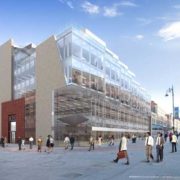ne would think that the task facing of NAMA of valuing existing properties which are currently leased or vacant would prove a much simpler process than valuing development land.
Unfortunately, this is not the case due to the current volatility of the variables that determine the value of existing buildings – namely rental value and the multiple applied to this income.
Consider the office sector, by far the most significant part of the commercial property market. In the past few weeks, various property agencies have reported an office-vacancy rate of more than 20% and NCB stockbrokers has suggested that current office stock plus unreserved space under construction could take up to eight years to clear.
While this may be an extreme proposition, it is nonetheless very difficult to gauge where office rents are going to go over the coming two years.
Essentially, office rents are determined by supply and demand and, until there is net employment growth in the service sector, office rents will continue to fall. It is widely accepted that office rents peaked at about €60 per sq ft for prime space in Dublin 2 but now this same space could be leased for about half of this rate (and falling) as developers, landlords and sub-letting tenants all compete for the precious few occupiers in the market.
The rollercoaster ride that is the office market is far too frequently boosted by local authorities anxious to grant planning to developers who are not required to prove demand for the end product, or to give consideration to the space that will be vacated if this new product is taken up by indigenous firms.
It is the indigenous nature of the majority of office take-up over the past five years, and the numerous vacant building these occupiers have left behind, that has accelerated the vacancy rate and the dramatic fall in rents.
Similarly difficult to call is what yield (or multiple) to capitalise these rents at in order to determine the capital value. Prime office yields peaked at about 3.75% but are now perceived to be above 7%. But what current or perceived future rental levels are these yields based on?
Depending on any given valuer’s interpretation of where office rents are at, and likely to go to, their fall from peak rates could range from 50% to as much as 80%. Add to this the almost zero availability of bank finance, zero indigenous institutional demand for investment product and the poor perception of Irish property at the moment and the rollercoaster ride becomes even more scary. Remove also from this volatile market the stabilising effect of upward-only rent review and the Nama valuation conundrum become even more onerous.
If there can be a silver lining it is that commercial property will begin to climb again and the bounce will be predictably sharp. When demand outstrips supply in an expansionary economy, there is limited sensitivity to the occupational cost of a building in the service sector. This is the principle reason for the sharp incline in office rents.
It is this feature of the office market that has led to prime office space renting at massive premiums during boom times, highlighting that it is the best-located space in terms of public and private infrastructure and staff services that will benefit most from the bounce and that such space will weather the storm best.
So if you can buy well-located, well-specified office buildings in a city-centre location well-served by public transport off weak rents and weak yields you might just start to enjoy the rollercoaster ride, unlike those who have joined the process in the last three to four years or those in Nama who have to value it over the next three to four months.
Rod Nowlan, Investment Director











